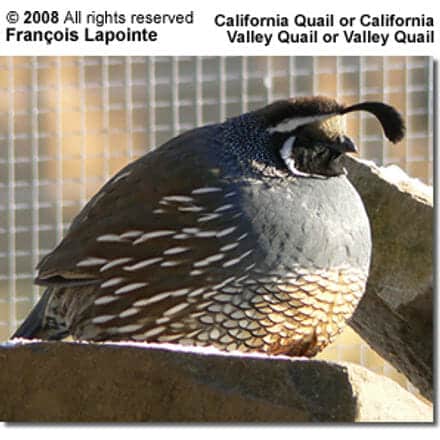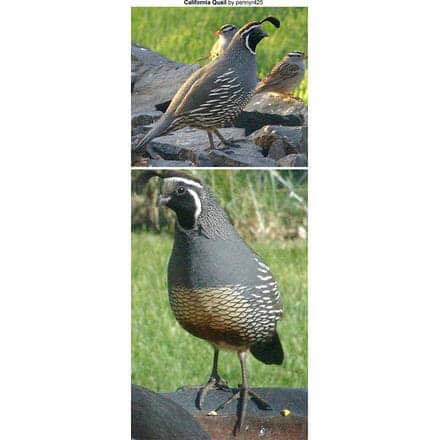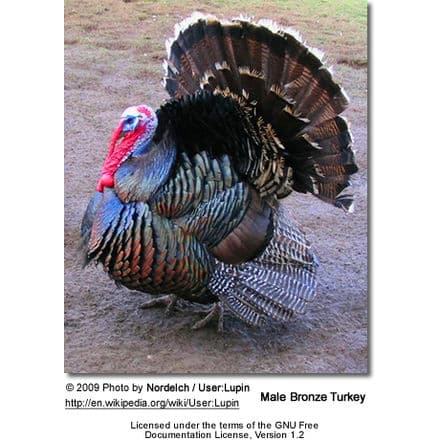California Quail
The California Quails, Callipepla californica, also known as the California Valley Quail or Valley Quail, is a small ground-dwelling bird in the New World quail family. It is the state bird of California.
Description:
These birds have a curving crest or “plume” that droops forward – black for males and brown for females; the flanks are brown with white streaks. Males have a dark brown cap and a black face with a brown back, a grey-blue chest, and a light brown belly.
Females California Quails and immature birds are mainly grey-brown with a light-colored belly.
Their closest relative is Gambel’s Quail which has a more southernly distribution and a scalier appearance.
The two species separated about 1-2 mya ago, during the Late Pliocene or Early Pleistocene (Zink and Blackwell, 1998).
The California Quail is a highly sociable bird that often gathers in small flocks known as “coveys”, and one of the daily communal activities is the taking of dust baths. A family of quail will select an area where the ground has been newly turned or is soft, and using their underbellies, will burrow downward into the soil some 1-2 inches.
They then wriggle about in the indentations they have created, flapping their wings and ruffling their feathers, causing dust to rise in the air.
They seem to prefer sunny places in which to create these dust baths, and an ornithologist can detect the presence of quail in an area by spotting the circular indentations left behind in the soft dirt, some 3-6″ (7-15 cm) in diameter.
Distribution / Habitat
They are all-year residents. Although this bird coexists well at the edges of urban areas, it is declining in some areas as human populations increase. They were originally found mainly in the southwestern United States but they have been introduced into other areas including British Columbia, Hawaii, Chile, New Zealand, Norfolk Island, and King Island in Australia.
Quail Information … Quail Photo Gallery

These birds forage on the ground, often scratching at the soil. They can sometimes be seen feeding on the sides of roads. Their diet consists mainly of seeds and leaves, but they also eat some berries and insects. If startled, these birds explode into short fast flight. Given a choice, they will normally make their escape on foot.
Breeding
Their breeding habitat is shrubby areas and open woodlands in western North America. The nest is a shallow scrape lined with vegetation located on the ground under a shrub or other cover. The female usually lays around 12 eggs. Once they are hatched, both parents look after the young.



